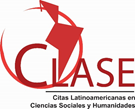The interplay of language and culture in international communication
Keywords:
Communication, Modern life, Linguistics, Intercultural communicationAbstract
Nowadays, in an era of unprecedented intercultural contact, effective communication hinges not only on linguistic proficiency but also on cultural competence. Traditional language teaching, however, often neglects the cultural dimension essential for mutual understanding. Taking this into account in this research it is examined how divergent linguistic conventions and cultural frameworks interact in real‑world settings. Our results indicate that minor semantic discrepancies and differing contextual norms can precipitate significant misunderstandings, while cultural “filters” shape perceptions of silence, directness, and decision‑making processes. Crucially, we show that dual sensitivity to both grammatical structures and underlying cultural norms is required to “read between the lines.” Therefore, interventions—such as real‑life simulations, immersion experiences, and targeted intercultural training—prove effective in cultivating adaptability, empathy, and trust across cultural divides. By fostering intercultural communication competence as a key soft skill, organizations and educators can minimize barriers, enhance collaborative synergies, and promote authentic dialogue in our increasingly globalized world.
Downloads
Published
How to Cite
Issue
Section
License
Copyright (c) 2025 Editorial "Universo Sur"

This work is licensed under a Creative Commons Attribution-NonCommercial-NoDerivatives 4.0 International License.
La editorial "Universo Sur", de la Universidad de Cienfuegos, publica el contenido de la Revista "Universidad y Sociedad" bajo una Licencia Creative Commons Atribución-NoComercial-SinDerivar 4.0 Internacional.
© Podrá reproducirse, de forma parcial o total, el contenido de esta publicación, siempre que se haga de forma literal y se mencione la fuente.










